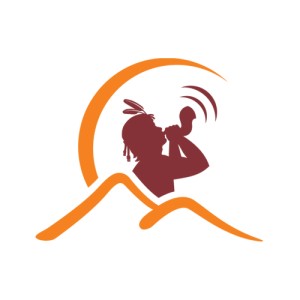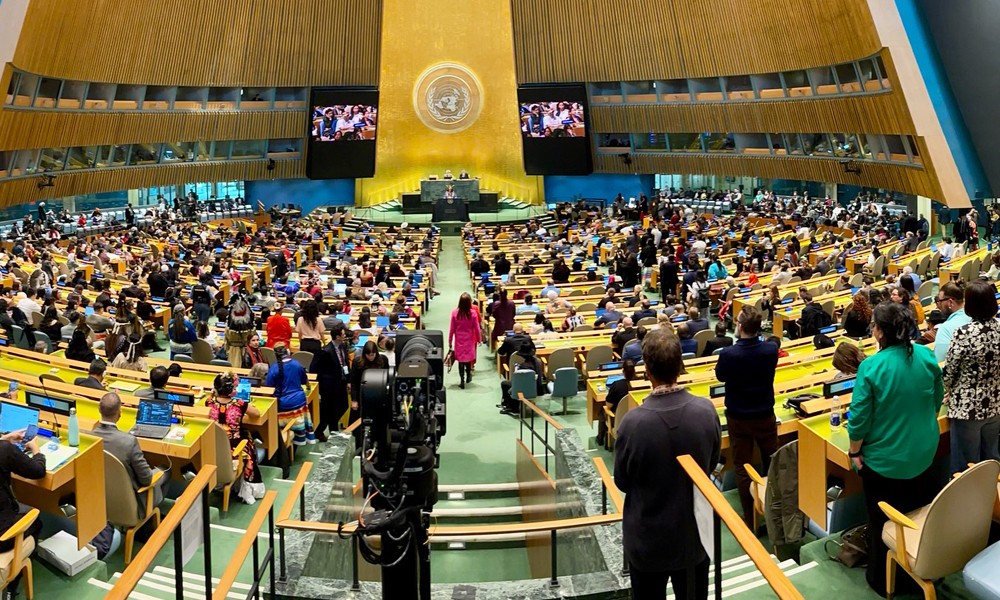The COVID-19 pandemic has spread all over the globe, infecting more than 820,000 people and claiming over 40,000 lives so far. In Nepal, only 5 imported cases have been confirmed by the government so far. But many believe that Nepal's low infection rate could be misleading because not enough people are being tested due to lack of testing kits. Over two months after the first imported case was detected, Nepal has tested less than 1,000 people. And thousands of people who have returned home from abroad since the start of the outbreak are not being traced. Also, there are reports that people with fever are being returned from hospitals without treatment.
However, the government has announced a nationwide lockdown to contain the spread of the Covid-19 apart from suspending commercial flights, sealing off the border, imposing restrictions on mass gathering and promoting social distancing.
Indigenous Peoples do not get health messages being conveyed by the government. And language is also another barrier for them. They do not understand or speak Nepali language, through which most messages are being delivered. As a result, they fail to take precautionary reasons.
The Covid-19 disease does not discriminate against any one in the sense that it infects everyone regardless of their class, caste or creed. However, Nepal's Indigenous Peoples are believed to be more vulnerable to being infected with the deadly disease mainly because of three reasons: a) lack of awareness and precautionary measures, b) deprivation of government services, and c) their unique lifestyle -- they mostly live in large extended families, which means they lack privilege to maintain social distancing.
Lack of awareness
Indigenous Peoples lag other communities when it comes to consuming media. A majority of them do not own media tools like television and radio. Due to the low literacy level, they do not read newspapers. They also lack access to the internet. So, they do not get health messages being conveyed by the government. And language is also another barrier for them. They do not understand or speak Nepali language, through which most messages are being delivered. As a result, they fail to take precautionary reasons.
Deprivation of government services
Indigenous Peoples mostly live in remote and under-served areas with no or very little access to health care. They need to walk for hours to get basic health care. If there is an outbreak of coronavirus due to out-migration, they will not get health services.
Unique way of living
Indigenous Peoples live in large joint families, mostly in their ancestral houses. In such a setting, it would be difficult to isolate the elderly people. They can be easily exposed to the deadly virus. Also, the elderly people have a significant role in indigenous communities, especially while performing ceremonies, rituals or other social gatherings. If an indigenous person living in a joint family gets the virus, s/he is likely to infect everyone in the family.
Delivering messages in local indigenous languages
Considering how important it is to deliver key health messages to Indigenous Peoples, Indigenous Television is producing and broadcasting a series of Public Service Announcements (PSAs) in multiple indigenous languages. The PSAs are being broadcast not just through the television but also on multiple social media platforms.
The PSAs have been produced to make Indigenous Peoples understand the risk of coronavirus disease, and what type of precautionary measures they can take to be safe.
The PSAs have been produced to make Indigenous Peoples understand the risk of coronavirus disease, and what type of precautionary measures they can take to be safe. Indigenous Television is producing these important messages in the languages indigenous people speak and understand.
Indigenous Television has already produced a total of 19 PSAs in 18 different indigenous languages—Gurung, Tamang, Sunuwar, Newar, Limbu, Uranw, Hyolmo, Magar, also Magar Dhut, Tharu, Bantawa Rai, Chamling Rai, Dungmali Rai, Kulung Rai, Sherpa, Thami, Dhimal and Nepali including sign language.
Here are the videos produced and broadcast so far :
1) PSA about Coronavirus(COVID-19) in Uranw Indigenous language of nepal.
2) PSA about Coronavirus(COVID-19) in Thami Indigenous language of nepal.
3) PSA about Coronavirus(COVID-19) in Nepalbhasa-Newar Indigenous language of nepal.
4) PSA about Coronavirus(COVID-19) in Magar Indigenous language of nepal.
5) PSA about Coronavirus(COVID-19) in Nepali language of nepal.
6) PSA about Coronavirus(COVID-19) in Sherpa Indigenous language of nepal.
7) PSA about Coronavirus(COVID-19) in Tamang language of nepal.
8) PSA about Coronavirus(COVID-19) in Koits-Sunuwar Indigenous language of nepal.
9) PSA about Coronavirus(COVID-19) in Kulung-Rai Indigenous language of nepal.
10) PSA about Coronavirus(COVID-19) in Hyolmo Indigenous language of nepal.
11) PSA about Coronavirus(COVID-19) in Limbu Indigenous language of nepal.
12) PSA about Coronavirus(COVID-19) in Tharu Indigenous language of nepal.
13) PSA about Coronavirus(COVID-19) in Gurung Indigenous language of nepal.
14) PSA about Coronavirus(COVID-19) in Dungmali-Rai Indigenous language of nepal.
15) PSA about Coronavirus(COVID-19) in Chamling-Rai Indigenous language of nepal.
16) PSA about Coronavirus(COVID-19) in Bantawa-Rai Indigenous language of nepal.
17) PSA about Coronavirus(COVID-19) in Sign language.
18) PSA about Coronavirus(COVID-19) in Dhimal-Indigenous language of nepal
19) PSA about Coronavirus(COVID-19) in Magar-Dhut-Indigenous language of nepal
Similarly, Indigenous Community Radio Network has also produced 16 PSAs into different indigenous languages, which have been widely distributed and broadcast through 21 different Indigenous Community Radio stations spread across the country. Here are the audios produced, distributed and broadcast 16 PSAs so far.
1) PSA about Coronavirus(COVID-19) in Nepali language of nepal.
2) PSA about Coronavirus(COVID-19) in Thami Indigenous language of nepal.
3) PSA about Coronavirus(COVID-19) in Tamang Indigenous language of nepal.
4) PSA about Coronavirus(COVID-19) in Sherpa Indigenous language of nepal.
5) PSA about Coronavirus(COVID-19) in Gurung Indigenous language of nepal.
6) PSA about Coronavirus(COVID-19) in Bantawa-Rai Indigenous language of nepal.
7) PSA about Coronavirus(COVID-19) in Dungmali-Rai Indigenous language of nepal.
8) PSA about Coronavirus(COVID-19) in Chamling-Rai Indigenous language of nepal.
9) PSA about Coronavirus(COVID-19) in Koits-Sunuwar Indigenous language of nepal.
10) PSA about Coronavirus(COVID-19) in Limbu Indigenous language of nepal.
11) PSA about Coronavirus(COVID-19) in Hyolmo Indigenous language of nepal.
12) PSA about Coronavirus(COVID-19) in Kulung-Rai Indigenous language of nepal.
13) PSA about Coronavirus(COVID-19) in Magar Indigenous language of nepal.
14) PSA about Coronavirus(COVID-19) in Uranw Indigenous language of nepal.
15) PSA about Coronavirus(COVID-19) in Nepalbhasa-Newar Indigenous language of nepal.
16) PSA about Coronavirus(COVID-19) in Tharu Indigenous language of nepal.
17) PSA about Coronavirus(COVID-19) in Dhimal Indigenous language of nepal.
18) PSA about Coronavirus(COVID-19) in Magar-Dhut Indigenous language of nepal.









